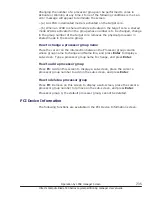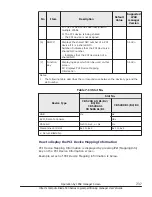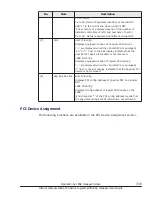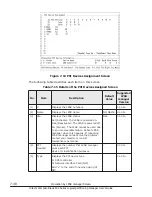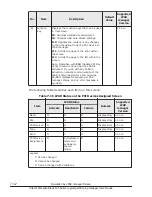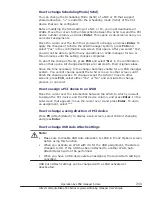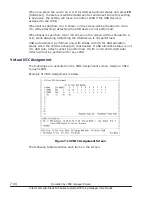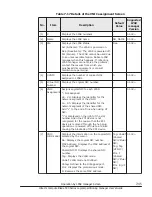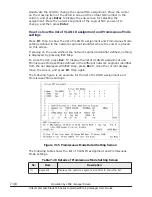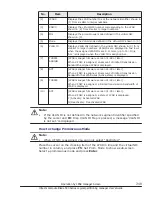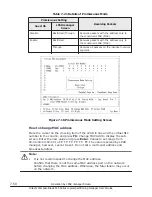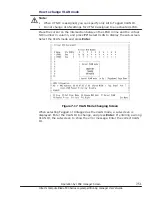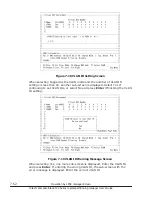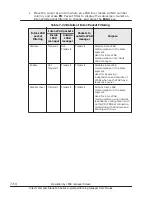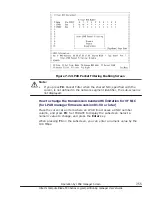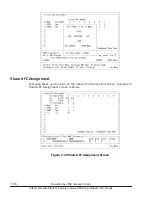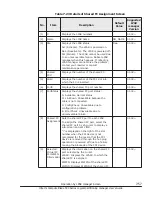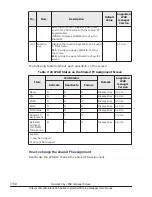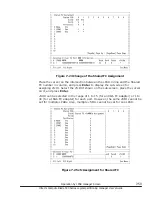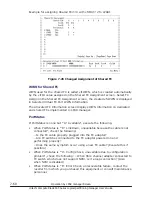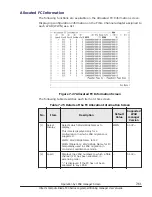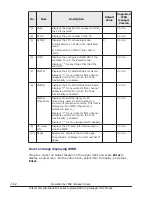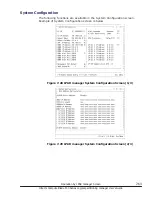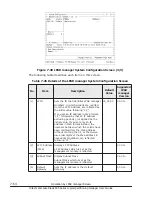
No.
Item
Description
(2)
LPAR#
Displays the LPAR number to set the network identifier shown in
(1) from smaller to larger numbers.
(3)
VNIC#
Displays the virtual NIC number corresponding to the LPAR
shown in (2) from smaller to larger numbers.
(4)
Prm
Displays the promiscuous mode defined in the virtual NIC
shown in (3).
(5)
Mode
Displays the VLAN mode defined in the virtual NIC shown in (3).
(6)
VLAN ID
Displays VLAN IDs defined in the virtual NIC shown in (3) from
smaller to larger numbers. VLAN IDs are displayed in two rows
when the assigned VLAN IDs are 9 or more (up to 16). Only
'ALL' is displayed when the VLAN ID is assigned ALL.
(7)
TXRATE
ASSIGN
[LPAR manager firmware version 01-9X or later]
When VF NIC is assigned, an amount of limited transmission
bandwidth assigned LPAR is displayed.
(8)
ACT
[LPAR manager firmware version 01-9X or later]
When VF NIC is assigned, an amount of limited transmission
bandwidth that LPAR uses (Active state) is displayed.
(9)
TXRATE
[LPAR manager firmware version 01-9X or later]
When VF NIC is assigned, a limited transmission bandwidth of
LPAR is displayed.
(10)
ACT
[LPAR manager firmware version 01-9X or later]
When VF NIC is assigned, a state of LPAR is displayed.
Y (Activate): Activated LPAR
N (Deactivate): Deactivated LPAR
Note:
•
If the VLAN ID is not defined in the network segment identifier specified
by the cursor and F2: Disp VLAN ID Map is pressed, a message 'VLAN ID
is not set.' is displayed.
How to change Promiscuous Mode
Note:
•
When VF NIC is assigned, you can only select "Restricted".
Place the cursor on the crossing item of the LPAR in line and the virtual NIC
number in column, and press F5: Set Prom. Mode to show a sub-screen.
Select a promiscuous mode and press Enter.
Operation by LPAR manager Screen
7-49
Hitachi Compute Blade 500 Series Logical partitioning manager User's Guide

